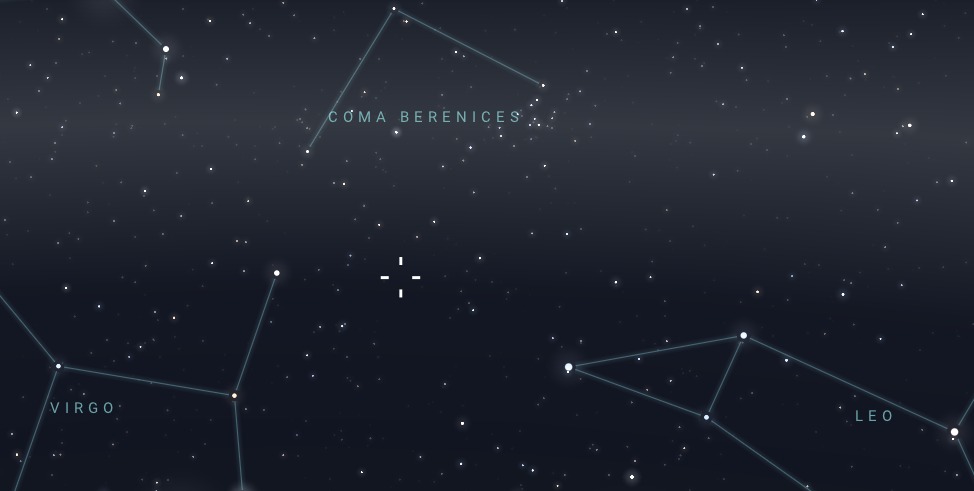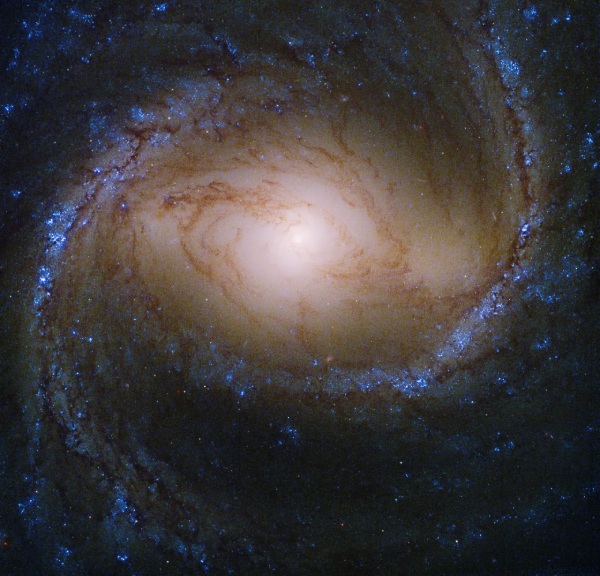The M91 galaxy, also known as NGC 4548, is a barred spiral galaxy located in the constellation Coma Berenices. It is a member of the Virgo Cluster, a massive collection of over 1,300 galaxies.
M91 is situated approximately 55 million light-years from Earth, making it relatively nearby in cosmic terms. It was discovered by the French astronomer Charles Messier on March 18, 1781, during his hunt for comets. Initially, it was one of the “missing” Messier objects because of an error in its recorded coordinates, but it was eventually identified correctly in the 20th century.
Structure and Composition
M91 exhibits a prominent bar structure across its center, a common feature in many spiral galaxies, which is believed to play a crucial role in channeling gas towards the core, potentially fueling star formation and the activity of the central supermassive black hole. The galaxy’s spiral arms are well-defined and host numerous regions of active star formation, visible as bright, blue knots scattered along the arms. The core of M91 is less luminous compared to some other barred spirals, indicating a relatively moderate rate of star formation in its central region.
Spectroscopic observations have revealed that M91 has a metal-rich composition, a trait that is typical for galaxies with significant past star formation. Additionally, the galaxy exhibits a significant amount of dust, which can obscure some of its features in visible light but can be studied using infrared observations. M91 also shows signs of interactions with other members of the Virgo Cluster, evident from its slightly asymmetric shape and some disturbances in its outer regions. These interactions may be driving some of the current star formation and could alter its structure over time.
Black Hole
M91, like many other spiral galaxies, hosts a supermassive black hole at its core. The mass of this black hole, however, has not been precisely determined. In general, the mass of central supermassive black holes in galaxies like this one can range from millions to billions of times the mass of our Sun. Observations suggest that the presence of a bar structure in galaxies, like the one in M91, can influence the accretion of matter onto the central black hole, possibly affecting its growth over time. The bar structure can funnel ionized gas and dust towards the galaxy’s core, potentially feeding the black hole and contributing to star formation in the central region.
Research on M91’s central black hole is ongoing, with astronomers utilizing various wavelengths to understand its characteristics better. X-ray observations, for instance, can provide insights into the activity around the black hole, while radio and infrared observations can help in studying the dynamics of the surrounding gas and dust. Understanding the supermassive black hole in the galaxy contributes to the broader knowledge of galaxy evolution and the role these black holes play in their host galaxies.
M91 also exhibits significant regions of ionized gas, which are important indicators of star formation and galactic dynamics. The presence of ionized gas in a galaxy is typically traced through emissions from ionized hydrogen (H II regions), which are clouds of gas ionized by the ultraviolet light from young, hot stars. Spectroscopic studies, including those in the optical and ultraviolet bands, can provide insights into the ionization state of the gas and the underlying processes, such as shocks from supernovae or outflows driven by the black hole.
Observation
M91 has an apparent magnitude of approximately 10.2. This makes it a very faint object, requiring a telescope for proper observation. The galaxy’s visibility is influenced by factors such as light pollution, atmospheric conditions, and the observer’s experience. Under dark skies and with an appropriately sized telescope (at least an 8-inch aperture), observers can discern details of M91’s barred spiral structure.
The best time to observe M91 is during the spring months, particularly from late March to May in the northern hemisphere. During this period, Coma Berenices is well-positioned in the sky, reaching its highest point in the night sky around midnight in April and May. This positioning provides the darkest and most stable viewing conditions, allowing for better visibility of the galaxy.




